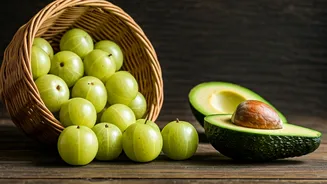The Ghee Challenge
Ghee, a staple in Indian cuisine, is often adulterated with cheaper substitutes, posing risks to consumer health. This adulteration is not only a matter
of reduced quality but can also lead to serious health complications if the substitutes used are harmful. The detection of adulteration becomes crucial because consumers may be unknowingly consuming impure products. This is especially true for ghee, which is a key ingredient in many traditional dishes and often consumed daily, highlighting the need for vigilance and awareness among consumers across India to ensure the purity of their ghee.
Visual Inspection Tips
One of the initial checks for ghee purity involves a visual examination. Pure ghee typically has a clear, golden appearance, and its texture should be smooth without any graininess when in liquid form. Examine the ghee for any sediment or unusual particles that may indicate the presence of adulterants. If the ghee appears cloudy, contains any off-color hues, or shows visible layers, it may be a sign of adulteration. It is also important to observe the ghee's state at different temperatures; pure ghee should solidify uniformly when cooled. The appearance alone will not confirm purity, but it offers the first clue about the ghee's authenticity, guiding further investigations.
The Melting Test
The melting test is a simple way to assess the quality of ghee. Place a small amount of ghee in a pan and heat it gently. Pure ghee should melt completely, with no residue left behind, becoming clear and transparent in its molten state. If the ghee is adulterated with vegetable oils or other fats, it may leave behind a residue or appear to separate during the melting process. Also, pay attention to the aroma during the melting process; pure ghee will emit a rich, characteristic aroma that is distinct and pleasant. The absence of the typical ghee smell or the presence of a different odor indicates potential contamination, helping to determine the ghee's purity through this practical method.
Temperature Assessment Method
The temperature test provides an additional measure to verify the purity of ghee. Heat a small quantity of ghee in a pan until it begins to boil. Pure ghee, when heated, should not foam excessively or produce any unusual sounds. The presence of excessive foam or crackling sounds suggests that there may be additives or water in the ghee. Pure ghee, as it boils, should release its characteristic aroma without any strange or unpleasant odors. Observing the behavior of ghee under heat can thus provide further clues about its authenticity. These observations, combined with the initial visual checks, can help you develop a basic understanding of whether the ghee you are using is pure or not.
Storage and Shelf-Life
Proper storage significantly impacts the quality and shelf-life of ghee. Pure ghee can usually last for a relatively long time without refrigeration, if stored correctly. Store ghee in an airtight container, away from direct sunlight and heat. The color and consistency of the ghee should be monitored periodically. If there are noticeable changes in color, texture, or if the ghee develops an off-flavor, it may indicate that the ghee has been adulterated or has gone bad. Adulterated ghee may spoil faster than pure ghee due to the presence of unstable oils or other compounds. By storing ghee properly and monitoring these changes, consumers can further ensure the purity of their supply and extend its usability.
Taste and Smell Test
Taste and smell tests are vital for identifying ghee adulteration. Pure ghee has a rich, nutty flavor and a distinct aroma that is noticeable even before tasting it. When tasting, a small amount of ghee should leave a pleasant, lingering taste in the mouth. Any off-flavors, such as a metallic, rancid, or chemically-like taste, are indicators of adulteration. In addition to taste, pay attention to the aroma; if the ghee has an unusual smell that differs from the expected, sweet, nutty fragrance of pure ghee, this suggests impurity. Both smell and taste tests, when used in conjunction with visual and other tests, provide a thorough method of determining whether ghee is pure and suitable for consumption.
Buy from Trusted Sources
To avoid adulterated ghee, sourcing from reliable and trusted vendors is paramount. Buy ghee from established brands or local suppliers with a reputation for quality. Look for brands that clearly label the ingredients and provide information about the manufacturing process. Check for certifications, such as those from reputable food safety organizations, which indicate that the product has undergone quality checks. Reading customer reviews can provide insights into the experiences of other consumers. Moreover, it is helpful to inquire about the origin of the ghee, as some regions and sources are known for producing higher-quality ghee. Prioritizing these considerations reduces the risk of consuming adulterated ghee and increases the chances of purchasing a genuine, high-quality product.














